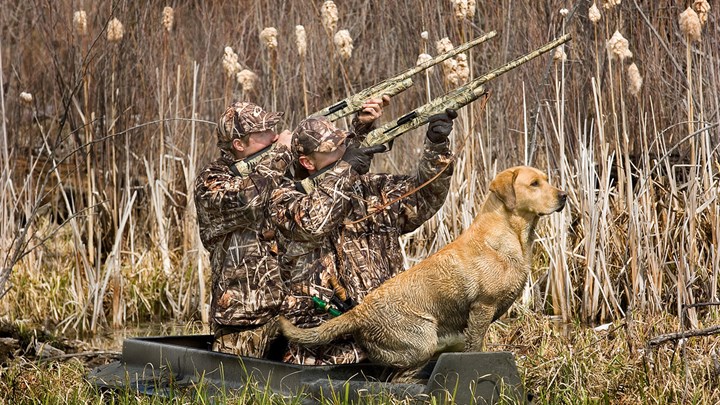
by Cody McLaughlin - Monday, October 16, 2023

After a verifiable explosion in hunter participation during the COVID-19 pandemic, data recently released by Delta Waterfowl highlights a concerning drop in waterfowling numbers across the United States and Canada.
Duck hunting is critical to the continuation of some of the most wildly successful conservation efforts in American history. A decline in duck hunters, though, means a directly correlated decline in conservation dollars, which could spell bad news for waterfowl and wetlands. This underscores the importance of R3 programs to recruit, retain and reactivate hunters and initiatives to increase hunting’s cultural acceptance as well as the need to provide certainty to hunters on hunting regulations and remove the obstacles to hunting participation.
According to the data released by Delta Waterfowl and the Canadian Wildlife Service, 125,635 Canadians hunted waterfowl during the 2022-2023 season. That’s the lowest number since Canada began tracking participation in 1966, and it marks a 75 percent decrease from the country’s high of 505,681 resident waterfowl hunters in 1978. Meanwhile, here in the United States, the U.S. Fish and Wildlife Service (USFWS) Migratory Bird Hunter Activity and Harvest Report shows an 8 percent dip in waterfowl hunter numbers, slipping from 1.04 million waterfowlers to 913,700—the lowest tally since 1962.
So what is the reason for the decline? After a verifiable explosion in hunter participation during the COVID-19 pandemic, which saw record reactivation, retention and recruitment of hunters (and fishermen), numbers are beginning to decrease again as the NRA and other hunter-backed conservation groups continue to focus on restoring the once-wide cultural acceptance of both hunting and the shooting sports.
Urbanization, loss of access, less free time and cost are frequently cited as reasons not to take up hunting. In addition, people who try waterfowl hunting but don’t stick with it often point to a lack of ducks and geese and/or complex regulations as factors. If this sounds familiar, it’s probably because there are similarities in the complaints across hunting disciplines. Northeastern deer hunters know all too well the difficulties of finding a spot to hunt, and even here in the Last Frontier of Alaska I have had my own challenges since taking up waterfowling when it comes to finding a huntable pond free from restrictions born of unfounded fears of stray steel shot killing a passerby. Addressing these issues and others, such as continued habitat degradation that has contributed to a nationwide drop in duck numbers will be central to restoring the sport.
Taking a buddy waterfowling who has never been or calmly explaining proper etiquette to less experienced hunters who may make a faux pas such as walking through your decoys or shooting the swing on your spread is more important now than perhaps ever as we seek to save hunting from perpetual decline.
About the Author
Cody McLaughlin is a conservationist and conservative thought leader on public policy issues including hunting, fishing, gun rights, free-market tax and wage policy and the environment. He recently launched Trout Stream Studios as an executive producer for podcasts and livestreams in the hunting and veterans’ affairs spaces, including for the popular Blood Origins podcast. He also works as an advertising consultant for conservative political causes, managing clients’ digital communications and online presence. He currently serves on the board of the Alaska Outdoor Council, the Last Frontier’s State’s NRA affiliate, and is a former board member and lead spokesman of the New Jersey Outdoor Alliance.
E-mail your comments/questions about this site to:
[email protected]
Proudly supported by The NRA Foundation and Friends of NRA fundraising.
